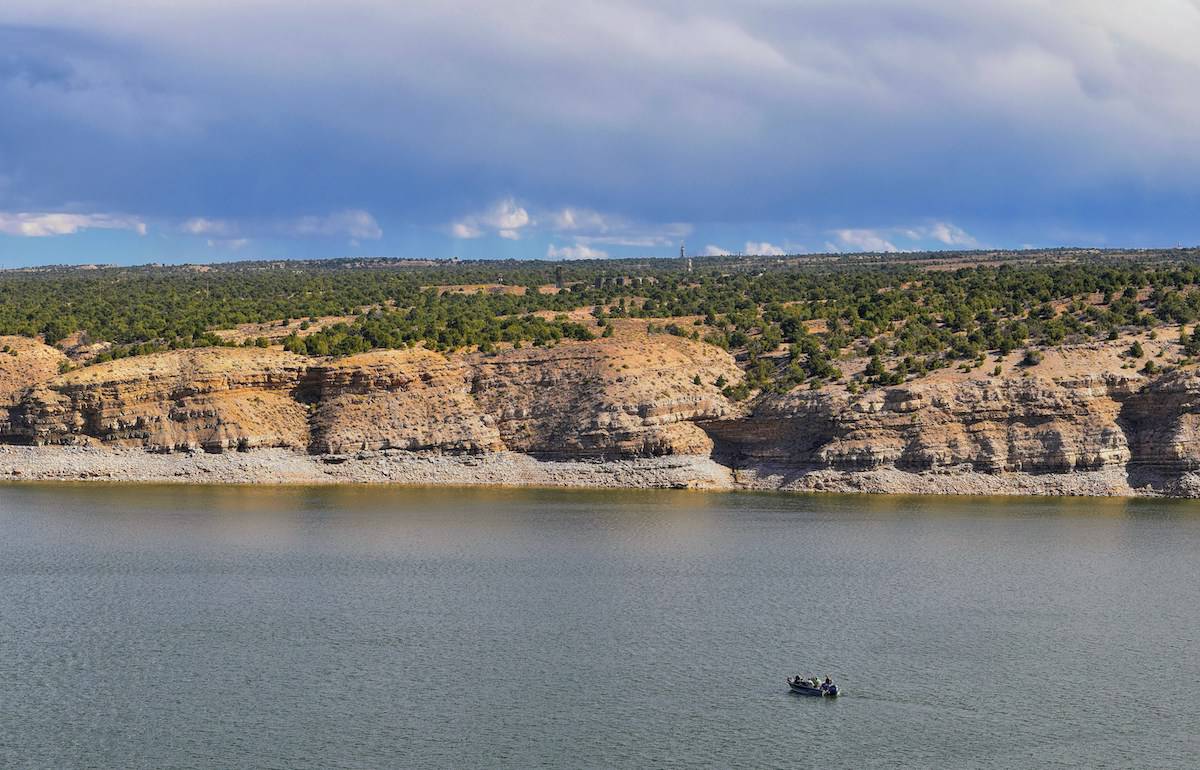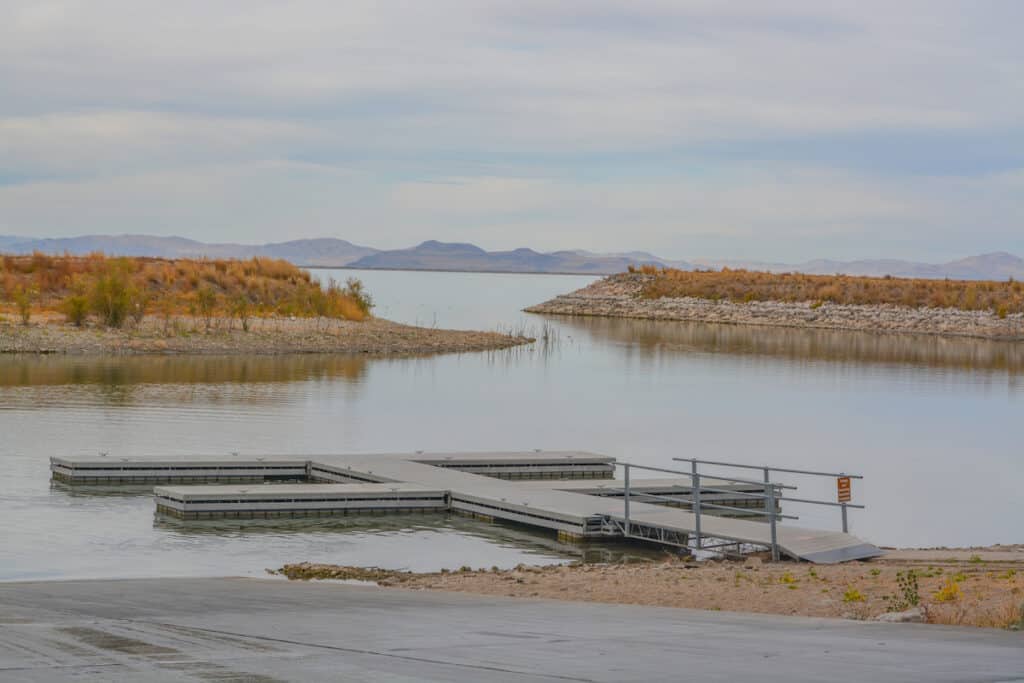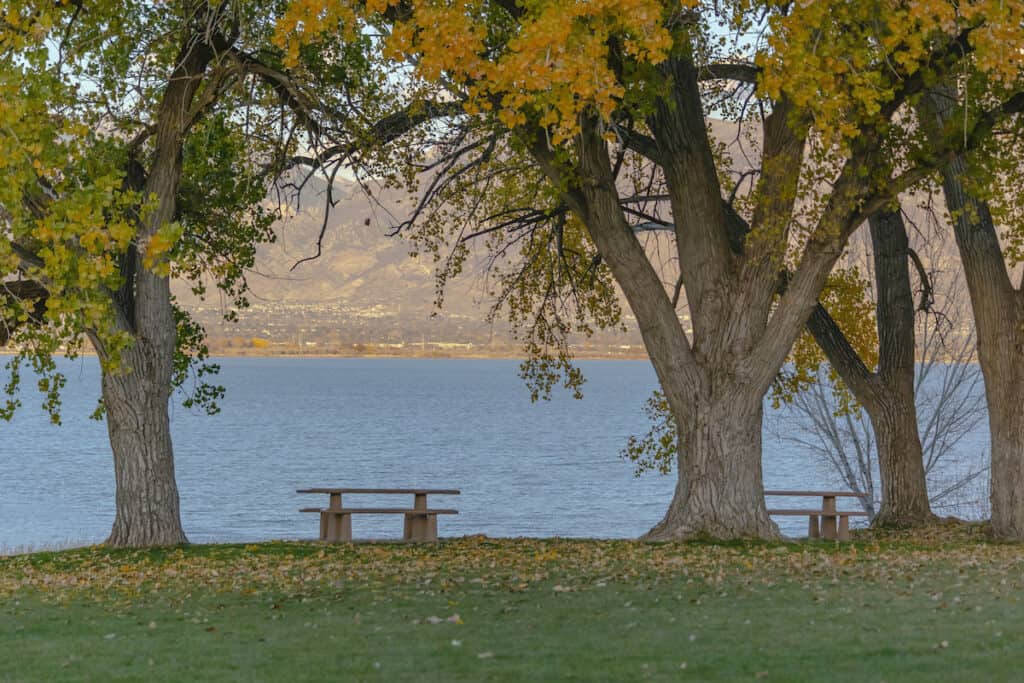Utah has some great walleye fishing if you know where to look. With so many epic trout lakes around, walleye can often get overlooked.
Walleye in Utah are a difficult fish to catch, though once you’ve figured them out, you can have a great time catching one of the tastiest fish Utah has to offer.
There are several lakes and rivers throughout the state where you can find these toothy critters.
This article will show you the handful of spots where your odds are going to be the best, but first we’ll make sure you know how to catch them when you get there.
Tips and Techniques
So, you’re after the ever-elusive walleye. You’ve heard they like to cruise the bottom, eating whatever they want. It should be easy to catch them, right?
Walleye are notoriously tricky. You can have a great day on the lake and go back under the exact circumstances again and not catch a thing.
First, you have to find them.
Search out the deeper sections of main channels in lakes, gravel, and rocky points and the area near river channels where the current slows. Try along riprap that has a moderate current.
Trolling at slow speeds works well. Use crankbaits or work a bottom bouncer like a lindy rig setup with a worm harness and whole nightcrawler.
If you’d rather cast, toss a crankbait suited to the depth you’re fishing. The Rapala X-Rap is a good option. Use a slow retrieve. Walleye tend to go for slower baits.
Nightcrawlers and leeches work great in Utah and are among the only legal live baits available. Leeches are pretty hard to track down, but they are fire if you can get some.
Check out our easy fishing tips and techniques to catch more walleye.
The Best Walleye Lakes in Utah
We’ll tell you straight up, the top walleye fishing spot in Utah is Starvation Reservoir. Several walleye tournaments are held there, with catches of 10 pounds-plus recorded regularly.
The state record actually came from the Provo River just up from Utah Lake. Spring fishing in the lower Provo can yield big walleye, though regulations close it between Utah Lake and I-15 from March 1 through the first Saturday of May, so be careful where and when you fish.
Starvation Reservoir
Starvation Reservoir is east of Strawberry, about 120 miles southeast of Salt Lake City, close to Duchesne. It offers excellent access both from shore and by boat, with multiple ramps available.
This lake is teeming with walleye.
Some years have an issue with smaller fish due to overpopulation and lack of chub minnows, the primary forage.
That doesn’t mean the big fish are gone. Catch rates for bigger walleye are still strong. Every year finds multiple 14-pound fish caught, so it’s definitely worth the trip.
Launching from the state park will put you in the middle of prime walleye territory. Head to Rabbit Gulch, casting Rapalas as you go. Head from there up the lake to the inlet and back to the park along the opposite shore.
When the fishing is good, you should have your limit.
Yellow perch and black crappie have been introduced to provide more forage for the walleye, so until they gain a better hold, it’s best to put them back to feed the walleye.
Plastic jigs and grubs work well for the bigger fish. Bounce them along the rocks on the bottom.
If the walleye aren’t biting, go after the bass, trout and kokanee salmon in the reservoir.
Willard Bay Reservoir
Just off I-15 near Brigham City, you’ll find Willard Bay. It’s a great spot for targeting walleye as well as fishing for catfish and wipers.
Head out early in the morning for some great walleye fishing.
Walleye are active at night and start moving shallower to spawn in the early spring. Willard sees decent action beginning in March.
Target the entrance to the South Marina and along the northern and western dikes for best success.
There is a solid walleye population in the lake, thanks in part to the Utah Division of Wildlife Resources’ generous stocking program.
Once things get warmer, it’s possible to bring home a limit for dinner. They average around 2 to 3 pounds, which is perfect eating size.
The lake has some bigger fish, though the catch is generally those smaller 2- to 3-year-olds. Rapalas and tube jigs work well. Add some scent if they’re being finicky.
If the bite is off, throw on a mussel and go after the wipers.
Deer Creek Reservoir
Deer Creek Reservoir is a quick 20-minute drive from Provo. It has a large walleye population along with good fishing for trout and bass.
The walleye here are tricky to catch. A slow troll in the .6 to 1.2 mph range works well. Head to the lake about two weeks after the spawn for the best shot.
Bottom bouncers with worm harnesses work great, as do Wally Divers and Flicker Shads. Rapala X-Raps are another go-to. Slow and deep is the best approach from a boat.
Targeting the rocky drops near the shoreline with crankbaits can be fast action for fish in the 12- to 15-inch range, though the bigger fish are usually deeper.
Have a rod down for the walleye and another down for trout for a fantastic day on the water. Rainbows grow like footballs in here and put up a great fight.
Utah Lake
Utah Lake has everything and the kitchen sink in it. The Utah Lake State Park is the perfect spot to target walleye. It’s just off I-15 in Provo.
The park has plenty of amenities and offers a riprap dike and the inlet of the aforementioned Provo River. Walleye congregate in this area in early spring, and fishing at night can be epic.
The lake is shallow and has a muddy bottom. While that doesn’t sound like the ideal place for walleye, for whatever reason, they’ve thrived here.
Fish over 10 pounds are caught regularly, though once the spawn is over, the fish spread out and the fishing becomes more difficult.
The best spots are along the dikes by the marinas and around “Bird Island” on the southern end of the lake. Bird Island is heavily targeted, so expect some competition.
The primary forage for walleye is carp minnows and white bass, the latter of which are numerous and fun to catch in their own right. They’ll eat their own young during drought years. The lake has more predatory fish than forage available, so they adapt, and big fish eat small fish.
As the spawn draws to an end, the channel catfish become active. Utah Lake has some monster cats in it, so toss a line for a cat while you’re out there.
Lake Powell
Lake Powell has a sizeable walleye population, though most people target other species. Located in the southernmost section of Utah, Powell is a 6-hour drive from SLC.
If walleye fishing in Powell is on your list, head there in May.
The water temps are rising, and the winds blow sandy banks into the water. The waves and sand cause a lot of cloudiness in the water, giving the ordinarily nocturnal fish the chance to feed heavily during the daytime.
That’s great news for us anglers. Walleye seem to bite on anything that has a bit of a nightcrawler attached.
Toss a Senko tipped with a worm and slowly drag it across the bottom through the cloudy water off points, and you’ll be in business.
While at Powell, try your hand at catching the stripers, largemouth and smallmouth bass, crappie, bluegill, catfish, and more in there!
Lake Powell is an incredible fishery that belongs on every best-of list, though of course drought plays a role. I bet you could even find a trout in there if you tried hard enough.



